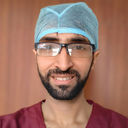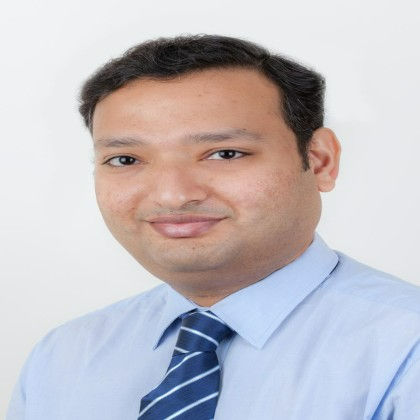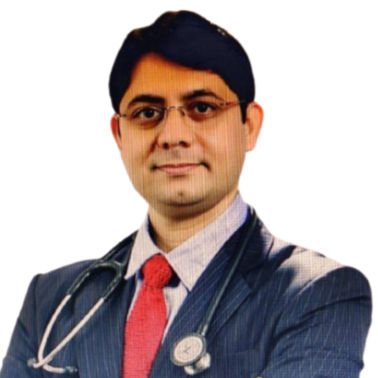Causes of Varicose Veins: How to Cope with This Condition
Discover the causes of varicose veins, including weak vein walls, increased blood pressure, lifestyle factors, hormonal changes, and age-related effects. Learn about risk factors, complications, and prevention approaches for healthier veins.

Written by
Last updated on 3rd Jul, 2025
Varicose veins refer to the enlarged and twisted veins that can develop everywhere in the body, especially in the legs. Even though varicose veins are not considered a fatal medical condition, they can lead to serious problems in the later stage.
This article covers what varicose veins are, how they differ from spider veins, their causes, symptoms, risk factors, and more.
What are Varicose Veins?
Varicose veins are the swollen, bulging veins under the skin which appear blue or purple in colour. It commonly occurs in legs, feet, and ankles and can cause itching or discomfort on the affected part of the body.
Any vein near the skin can become a varicose vein. It occurs when the valves within a vein weaken or become damaged, leading to impaired blood flow and swelling. These veins are most commonly found in the lower legs, as this area experiences higher pressure, particularly in individuals who spend extended periods standing or walking.
What are the Differences Between Varicose Veins and Spider Veins?
Spider veins are common vascular issues such as varicose veins. However, their differences lie in size, shape, location, and severity. The differences between varicose veins and spider veins are discussed below in the following table:
| Aspect | Varicose Veins | Spider Veins |
| Location | Primarily found in legs, feet, and ankles. | Small blood vessels on legs, face, or other areas. |
| Appearance | Larger, bulging, twisted, often blue, green, or purple. | Smaller, web or tree-branch shaped, can be red, blue, green, or purple. |
| Symptoms | Pain, itching, swelling, and potential ulcers. | Typically asymptomatic, and can cause burning, itching, or cramping. |
| Size | Over 3 millimetres wide. | Less than 1 millimetre wide. |
| 3D Structure | Yes, veins are raised and 3D. | Sometimes, veins are flat. |
Causes of Varicose Veins
Varicose veins develop when the walls of the veins weaken, leading to increased pressure within the veins. As a result, the veins stretch, and the valves that regulate blood flow may fail to function properly. When these valves weaken, blood can flow backwards and pool in the veins, causing them to swell, bulge, and twist.
These veins are most common in the legs, as the veins here work against gravity to return blood to the heart, aided by muscle movements and one-way valves. When these valves fail, blood flows backward and pools, leading to varicose veins.
While more prevalent in women, varicose veins can cause issues such as leg pain, swelling, blood clots, and skin changes if blood flow is significantly disrupted.
Risk Factors for Developing Varicose Veins
Even though varicose veins can occur in anyone, there are several factors that can increase the chances of getting them. These include:
Age: As people get older, the walls and valves of their veins may not function well, making them less elastic and stiff.
Family History: If varicose veins are common in the family, people are more likely to develop them.
Hormones: Changes in female hormones often stretch the walls of veins. Women who are pregnant, on birth control pills, or in menopause are more susceptible to varicose veins due to their hormonal imbalances.
Lifestyle: Long hours spent standing or walking reduce blood flow and lead to varicose veins.
Smoking: Consuming tobacco causes individuals to become more susceptible to developing varicose veins.
Excess Obesity: Extra body weight adds more pressure on the blood vessels, thus leading to the formation of varicose veins.
What are the Symptoms of Varicose Veins?
Varicose veins are caused by intense blood pressure. Here are the common symptoms of varicose veins:
A feeling of fullness, heaviness, or aching in the legs, sometimes with pain
Swollen veins that are easy to see
Bulging blue or purple veins
Slight swelling in the feet or ankles
Itching around the varicose veins
Changes in skin colour
Severe cases leading to venous ulcers (sores) on the skin
Cramps in the thighs or calves, often at night
Swelling in the legs
Pain in the legs or calves after sitting or standing for a long time
Dry, irritated, and scaly skin
Thickening and hardening of the skin in the legs and ankles over time
Consult Top cardiologist
Complications of Untreated Varicose Veins
The following are the common complications accompanied by varicose veins:
Leg Ulcers: Individuals who suffer from varicose veins can oftentimes develop painful ulcers on the skin surrounding the veins, especially around the ankle area. Prior to developing an ulcer, the area may become discoloured.
Blockage of Veins: In certain situations, the veins situated deep in the legs can become twisted, which can cause discomfort and swelling in the legs. Whenever the leg starts to hurt and is accompanied by swelling, it is recommended to visit a healthcare provider since this can be a sign of a blood clot.
Leg Swelling: If someone suffers from varicose veins for a longer period, there is a higher chance that they will suffer from swollen legs.
Superficial Thrombophlebitis: Clots may develop form inside the varicose veins, resulting in thrombosis in the superficial veins or thrombophlebitis. Although painful, this is usually not serious and can be treated.
Deep Vein Thrombosis (DVT): In case varicose veins are left untreated, it may lead to deep vein thrombosis (DVT), a blood clot formed in a vein deep inside the body.
Diagnosis of Varicose Veins
Here are the common methods to diagnose the presence of varicose veins in a human body:
Physical Examination
Doctors check the patient’s legs and visible veins while they are sitting or standing to assess the condition of their varicose veins. They also ask if the patient is suffering from any pain, swelling, or other symptoms to gather more information for the diagnosis.
Ultrasound
Some doctors may conduct a venous Doppler ultrasound test of the leg for diagnosis. It is a painless test that uses high-frequency sound waves to check blood flow in the veins. This allows the doctor to get a clear viewpoint of how blood is circulating in the legs.
Venogram
Often, the Venogram test is performed, where a special dye is injected into the legs, and X-rays are conducted. This gives a clear picture of the veins so that the doctor can check if issues like blood clots or blockages are causing the symptoms.
Treatment of Varicose Veins
The therapeutic methods used for the treatment of varicose veins include:
Surgical Intervention: Typically indicated for the most severe cases, it may involve tying off and eliminating the diseased vein.
Sclerotherapy: This is the injection of a sclerosant agent into the veins, which eventually leads to their occlusion and scarring.
Ablation: It is a procedure using heating from radiofrequency or lasers to seal the veins from the inside.
Phlebectomy: It is a surgical procedure which uses a small needle or scalpel to remove the varicose veins lying under the skin of the leg.
Conclusion
Varicose veins develop due to weakened vein walls and valves, high pressure within the veins, and various lifestyle and environmental factors. Additionally, hormonal imbalances, ageing, and previous vein damage can contribute to their formation.
To prevent or manage varicose veins, maintaining a healthy weight, engaging in regular exercise, and minimising prolonged periods of standing or sitting are highly recommended.
Consult Top cardiologist
Consult Top cardiologist

Dr. Sumanta Chatterjee
Cardiologist
12 Years • MBBS,MD General Medicine,DM Cardiology
Kolkata
HealthYou Speciality Clinic & Diagnostics., Kolkata
(25+ Patients)
Dr. Dixit Garg
Cardiologist
10 Years • MBBS , DNB (General medicine) , DNB (cardiology)
Gurugram
Smiles & Hearts, Gurugram

Dr. Pinaki Nath
Cardiologist
8 Years • MBBS, MD General Medicine, DM Cardiology
Barasat
Diab-Eat-Ease, Barasat

Dr. Mangesh Danej
Cardiologist
8 Years • MBBS, MD (General Medicine), DNB (Cardiology)
Pune
Dr Danej clinic, Pune
(375+ Patients)

Dr Yogendra Singh Rajput
Cardiologist
16 Years • MBBS, MD (General Madicine), DM (Cardiology)
Gurugram
Svasthya Child & Cardiac Care, Gurugram
Consult Top cardiologist

Dr. Sumanta Chatterjee
Cardiologist
12 Years • MBBS,MD General Medicine,DM Cardiology
Kolkata
HealthYou Speciality Clinic & Diagnostics., Kolkata
(25+ Patients)
Dr. Dixit Garg
Cardiologist
10 Years • MBBS , DNB (General medicine) , DNB (cardiology)
Gurugram
Smiles & Hearts, Gurugram

Dr. Pinaki Nath
Cardiologist
8 Years • MBBS, MD General Medicine, DM Cardiology
Barasat
Diab-Eat-Ease, Barasat

Dr. Mangesh Danej
Cardiologist
8 Years • MBBS, MD (General Medicine), DNB (Cardiology)
Pune
Dr Danej clinic, Pune
(375+ Patients)

Dr Yogendra Singh Rajput
Cardiologist
16 Years • MBBS, MD (General Madicine), DM (Cardiology)
Gurugram
Svasthya Child & Cardiac Care, Gurugram
